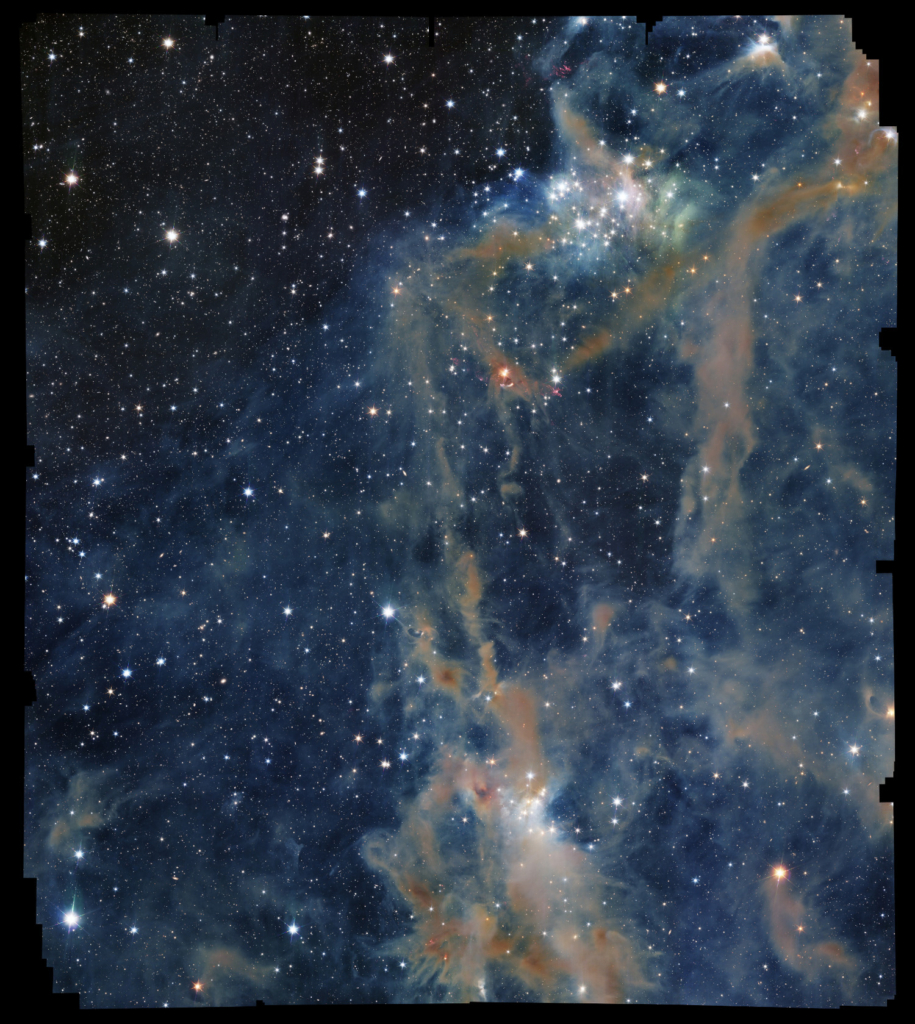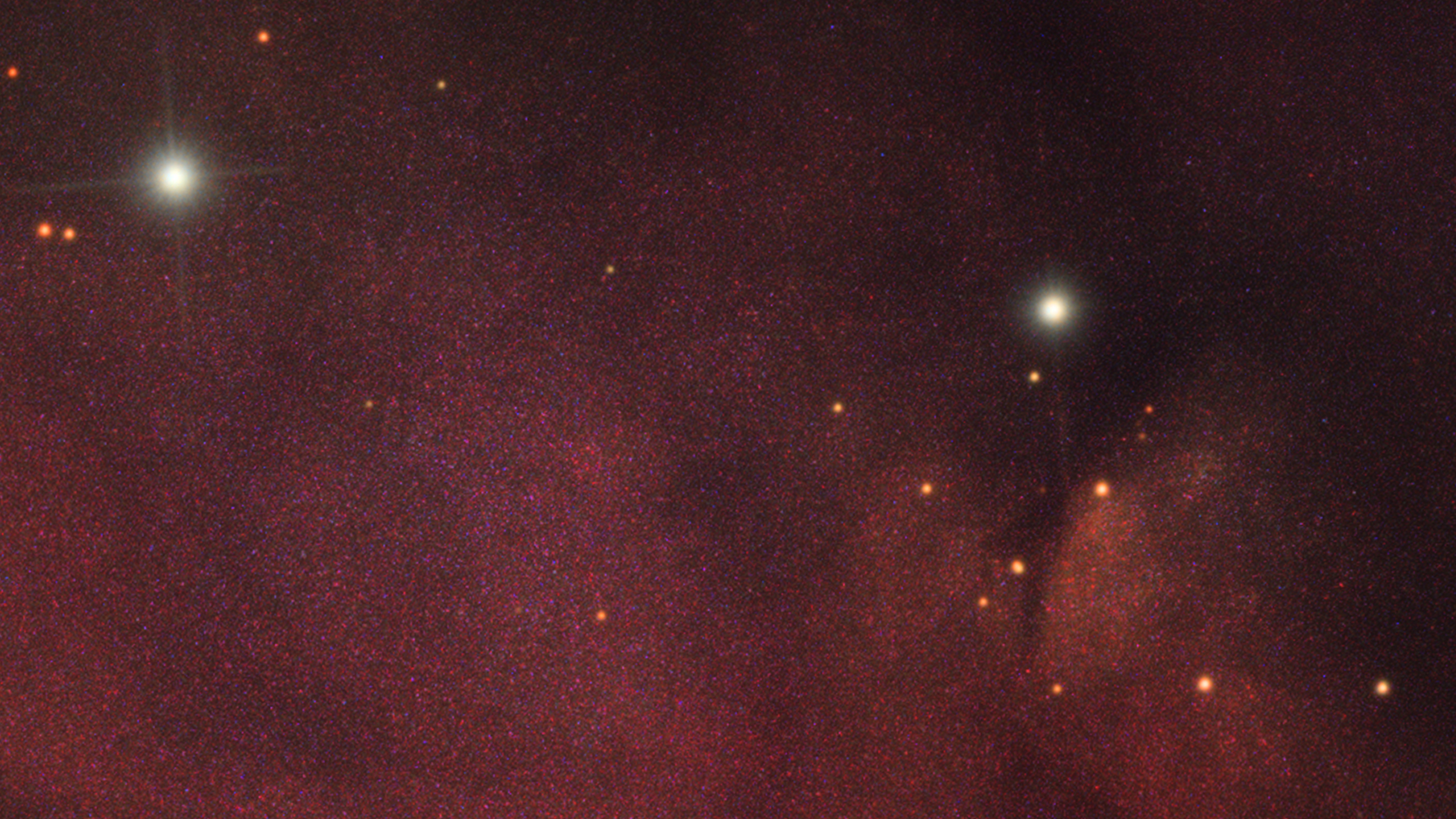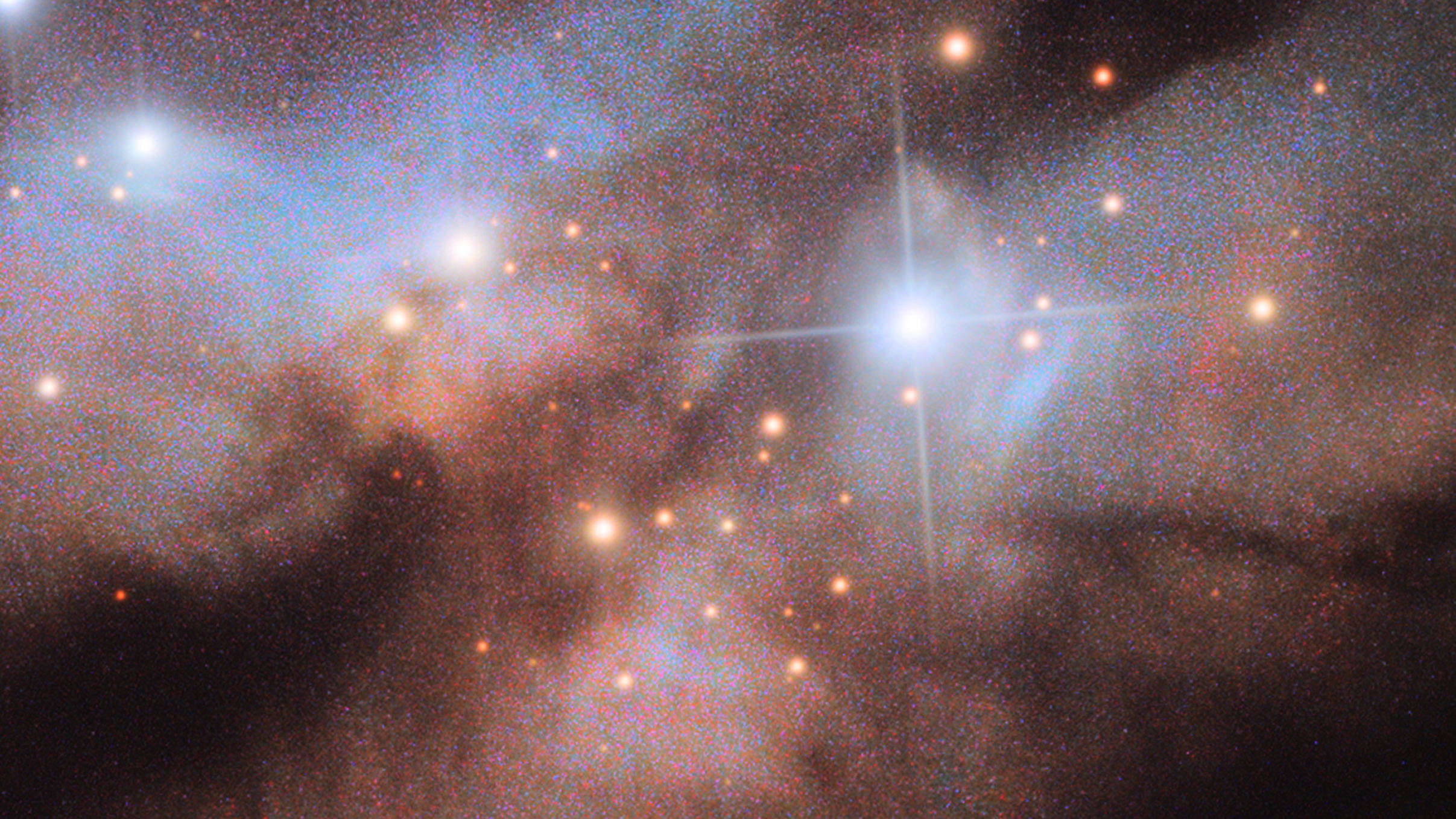Just recently, in early November 2025, ESA released Euclid’s image of ‘LDN 1641’, an actively star-forming region in the ‘sword’ region of the constellation Orion. This region was observed by Euclid in near-infrared wavelengths early on in the mission, during a test for the spacecraft’s ability to orient itself in the sky: will the spacecraft get confused if it has very little information for orientation? We now added a ground-based image in visible light and created a comparison – a tale of young stars and clouds of dust, and the struggle for light trying to shine through strong absorption.
Euclid is using a complex system for orientating itself towards target patches in the sky and to do station keeping once there, and a large part of this depends on seeing and identifying stars. Similar to historic navigation on ships, Euclid orients itself by using catalogues of known stars to know where it is pointing to; and it’s using the centers of stars for very fine correction maneuvres of its pointing while observing.
For this purpose, Euclid faces the same challenges as ancient seafarers: if there are no or few stars visible then orientation will be challenging or impossible. Since the number of visible stars varies strongly depending on which direction Euclid wants to point, tests were necessary to fine-tune Euclid’s pointing capabilities. One test: point at a region with as few stars as possible, check if Euclid still knows where it’s pointing, mark this test as completed, then give green light for starting the survey. The target for this test: LDN 1641

Looking at the image you might ask: Why do I see so many stars? Didn’t you just say Euclid looked at this field to not see many stars? Yes, we did. But this depends on how Euclid observes this field. This image of LDN 1641 is a composite of three near-infrared bandpasses in Euclid’s NISP camera. Called YE, JE, HE, these cover the wavelength range from 0.95 to 2.02 micrometer, at much longer (=redder) wavelengths than the human eye can see. The colours chosen are so-called ‘false colours’, think of this as chosing a colour-palette that suits the purpose of showing a scene that would otherwise just be black to the human eye. But the colouring is chosen in a way that the blue channel corresponds to shorter wavelenghts (~1 micrometer) and the red channel to longer wavelengths (~2 micrometer).
This image isn’t the first observation of LDN 1641 in the near-infrared, but it sticks out: it’s extremely detailed (more below) and it shows very faint structures. As a comparison here is a cutout with the same region shown from the 2MASS near-infrared all-sky survey. 2MASS has been the go-to database for near-infrared image before Euclid – but Euclid can detect objects already in its normal Wide Survey that are more than 600x fainter than 2MASS can see. However, the Euclid LDN 1641 image isn’t just a normal exposure, it was observed for almost 15x as long. How sensitive is that? Think if Euclid could see a single candle in this image, then 2MASS would need 35 household LED lamps for a source to be detected. And this shows:
A cutout of the LDN 1641 region, as seen in the near-infrared. The left image is from the 2MASS survey, the right one of the same scene with Euclid NISP, reaching to much fainter objects.
This doesn’t yet explain why there are so many stars to see. The brownish structure one can see in the NISP image is dust. Dust clouds always come with heavy star-formation. Dust is connected to dense gas, and the dense gas is what young stars are forming from – while at the same time they are feeding some of their gas envelope back into the surrounding mix. Their energetic radiation also creates pressure that can push holes into these dense gas clouds. So this whole structure, visible in the NISP image, is a nursery for young stars in a cloud of dense gas and dust.
In the infrared, light can pass quite easily through dust. It doesn’t get as easily absorbed as light at shorter wavelengths, think blue or visible light. As a consequence, the Euclid near-infrared image above shows many of the stars in the stellar nursery and also behind it. But: The navigation system of Euclid doesn’t operate in the near-infrared, it operates in visible light – and that changes everything.
If we go to visible light, one can hardly recognise the scene anymore – we asked Stephan Messner of the International Amateur Observatory to observe this target and create a colour image for us:
Comparison of the Euclid image in near-infrared light (left) to a visible light image (right) of the same scene. The visible light image was observed in five bandpasses with a total of 23.7 hours with a 10 inch mirror remote telescope and a 26 megapixel camera from Namibia. Credit visible light image: International Amateur Observatory / Stephan Messner
Two of the bright stars are prominent in both wavelengths, but some of the other stars are either much fainter in visible light – or completely absent. Their light has been attenuated or completely absorbed by the dust in the star forming region. One can even get an impression on which stars are probably further away, behind more dust and which might be located rather near the front side, towards us. But in part not only the visible light image but even the Euclid near-infrared image shows the dust itself:
Strong dust clouds and filaments in both Euclid near-infrared (left) as well as visible light (right). Credit visible light image: International Amateur Observatory / Stephan Messner
Here, even in the near-infrared the dust is very visible, hinting that also at these longer wavelengths it is far from transparent, even if a lot of stars shine through. We show some highlights of this field in a visible–near infrared comparison in this video below. By the way: such dust filaments on much larger scale can also be seen in many spiral galaxies – which indeed are the galaxies with the strongest star formation.
To loop back to the original aim at observing this field, we hope this explains why the Euclid orientation tracking in the visible wavelength range was much more challenging than the published near-infrared image suggests. However, the test was successful, and Euclid’s survey started in February 2024; the first minor data release release has taken place in March 2025, and the first of three large one’s will happen in late 2026. Those data will be focussed on observing many galaxies, very different from this deep look into our own Milky Way.
If you want to explore this Euclid NISP image in all detail and glory, here’s a tool for you to pan and zoom around in the image yourself. You can change the transparency of the Euclid layer showing the visible light image from the International Amateur Observatory, and the 2MASS near-infrared image underneath.
Concept, image composition and video: Yuzheng Kang. Text: Knud Jahnke








